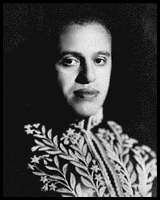THE War of Emboabas, which took place between the years 1708 and 1709, involved paulistas and foreigners for the domain of exploration in the mining region. The São Paulo pioneers were the first to discover gold in the region and wanted to be the only ones to explore the wealth. However, with the constant arrival of people from other Brazilian regions and also from Portugal, the Bandeirante exclusivity did not take place. It no longer mattered who arrived first, but extracted as much gold and other precious metals as possible.
The conflict in the early 18th century brought changes to the Brazil Colony. The Brazilian hinterland began to be populated, as the coast no longer brought profits from the sugar. The Portuguese crown was present, divided the captaincies of São Paulo and Rio de Janeiro and created the Captaincy of the Gold Mines. In addition, tax collection has become a routine for explorers in the region. It was possible to exploit precious metals as long as taxes were paid to the crown.
After the defeat of the Emboabas, the paulistas went to the region where today is Goiás and Mato Grosso, discovering new precious metal mines and expanding the gold cycle to the west of Brazil.
Read too: Hereditary captaincies - form of administration and colonization of Portuguese America
Historical background of the Emboabas War
Since arriving in Brazil, in 1500, that the Portuguese were looking for precious metals In america. The Spaniards were already profiting from the metals found in their mainland domains, and the Portuguese believed that these new lands could also generate wealth for the king. However, as soon as they disembarked, they found no precious stones. As they did not want to lose the lands conquered on the other side of the Atlantic, the Portuguese extracted brazilwood, a tree that was found abundantly on the Brazilian coast. But it was in sugar cane that Portugal actually started the exploration of its new colony. If it was not possible to make wealth with precious metals, the way was to profit from the sugar trade.
Between the 16th and 17th centuries, Brazil became a great sugar producer. The success of the Portuguese colony aroused the greed of several European nations, such as the Netherlands. The Dutch had control of the refining and sugar trade in Europe, but they also wanted to dominate the planting of sugarcane.
Thus, between the years 1630 to 1654, you Dutch invaded the NBrazilian northeast and took over the sugar millsa. The Portuguese managed to expel the invaders from their colony after an intense battle, which caused serious damage to the sugar economy.
Expelled from Brazil, the Dutch left for the Antilles and there applied all the knowledge acquired while dominating the Brazilian Northeast. Thus, the Netherlands became the main sugar trader and ousted Portugal. Unable to react to the competition, the Portuguese crown had to readjust itself to find new ways to continue making big profits in Brazil.
Do not stop now... There's more after the advertising ;)
Historical context of the Emboabas War
The sugar crisis has rekindled the search for gold. If the coast was going through a major economic crisis due to the devaluation of sugar in the European market, the solution was to migrate to the interior of the colony and explore its potential. The Portuguese crown organized expeditions that left the coast towards the Brazilian hinterland in search of precious metals. These expeditions were called Appetizer.
Further south was the Captaincy of São Vicente. Above the Serra do Mar was a village founded by the Jesuit priests that was called São Paulo de Piratininga. Unlike the Northeast, sugar production was not significant in the region. Paulistas lived a totally different life. The economy was for subsistence, that is, for internal production, and not for supplying the European market. Therefore, production was not as intense as in the Northeast.
Paulistas needed labor and did not have free access to work slave from Africa. It was necessary to advance to the interior in search of the Indians, who fled the coast after the arrival of the Portuguese. At Flags, unlike the Entrances, were expeditions that they left São Paulo towards the Brazilian hinterland in search of Indians. The organization and financing of these expeditions were the responsibility of the paulistas themselves, who, from then on, became known as scouts. In addition, the paulistas were also in search of precious metals. Numerous legends circulated in Brazil Colony about it, which awakened the adventurous spirit of the colonists. Lucas Figueiredo addresses this issue in the book “Boaventura – The Gold Rush in Brazil”.
In the mid-17th century, Bandeirantes expeditions began to occupy the sertão. Some Indians collaborated during the trip, either as guides opening the way, or guiding the best way to resist for so long in an unknown region. Countless highways that currently leave the capital of São Paulo were opened during this period, and the names of the pioneers they name many of them, such as Via Anhanguera, Rodovia Raposo Tavares, Rodovia dos Bandeirantes and Rodovia Fernão Days.
At the end of the 17th century, the bandeirantes discovered the first mines of gold in the region of Sabará (Currently the city is located in the metropolitan region of Belo Horizonte). The first traces of gold were found in river valleys and called “alluvial gold”. The news of the discovery of precious metals in the interior of Brazil provoked a rush of people eager to enrich themselves. So, they started to form the first cities, such as Vila Rica, São João Del Rei, Mariana.
The region of the mines was full of adventurers who left everything to change their lives with the extracted gold. As precious metals were discovered by private expeditions, the Portuguese Crown had no found a way to get hold of the region and start enjoying the profits from the extraction of wealth so desired.
The agglomeration of people vying inch by inch for precious metals generated conflicts. It didn't matter if the pioneers were the first to arrive in the region and discover the gold, the mine belonged to whoever found it first. Anyone who found nuggets of gold along the rivers could keep them. There were no rules to organize the space. At one time or another, the region would be the scene of armed conflicts, as in fact it was between 1708 and 1709, when the Emboabas War broke out.
emboabas
THE word "Emboaba" has indigenous origin, from the Tupi language. The Indians used this term to describe birds that had feathers all over their bodies. The pioneers were the first to arrive in the mines, but the news of the discovery of gold provoked the arrival of thousands of people who also wanted to enjoy that wealth. The word “emboaba” was used by the pioneers to call the outsiders who arrived later in the region.
See too: General language – language used within the colony to establish communication with the indigenous
Causes of the War of Emboabas
The War of Emboabas was motivated by the dispute over gold mines. The Bandeirantes wanted to obtain from the Portuguese crown the right to exclusively explore the precious metals found. However, the large number of Brazilians and Portuguese who were heading to the site made such a request unfeasible. The Emboabas War was fought between São Paulo explorers and other adventurers who arrived at the place later.
Before the war actually started, people from São Paulo and Emboabas had already gone through some disagreements. The outsiders killed two São Paulo chiefs who tried to impose the Bandeirante rule in the region. Contrary to the orders of the Portuguese crown, the Emboabas declared Manuel Nunes Viana governor of the Minas region and decided to expel the Paulistas.

Conflict
The main objective of the Emboabas was to weaken the state of São Paulo. For this, Manuel Nunes Viana led expeditions for combat. The Paulistas were led by the pioneer Borba Gato. It was in a region called Capão da Traição, near the current Minas Gerais city of Tiradentes, that the paulistas and emboabas fought the most tragic and decisive battle for the fate of the war. The Emboabas defeated the Paulistas and managed to exercise their dominance.
![Monument of Borba Gato located on Avenida Santo Amaro, in São Paulo. The bandeirante fought against foreigners in the Emboabas War. [1]](/f/5a2756cf73dca5068d6f0c180fb2d53f.jpg)
End of the Emboabas War
The War of Emboabas ended with the foreigners victory. Even though they were defeated, the paulistas did not give up on exploring precious metals. They organized expeditions towards Mato Grosso and Goiás.
Consequences of the Emboabas War
After the end of the war, the Portuguese crown took the initiative to intervene directly in the region of mines, preventing it from becoming a free territory. There was a separation of the captaincies of São Paulo and Rio de Janeiro and also the creation of the Captaincy of Minas de Ouro. Another measure taken by the crown was to levy taxes on mined gold. The fifth, that is, one fifth of the extracted gold remained with the king of Portugal.
The defeat of the paulistas did not shake the spirits of the Bandeirantes, who headed to Goiás and Mato Grosso, showing that the mining region was not concentrated in just one place. The exploration of gold promoted the interiorization of Brazil, and several villages were founded to accommodate adventurers who wanted to enrich themselves in the mines. The economy also diversified, for it was not only dependent on the export of precious metals to the metropolis. Commerce within the villages became profitable.
The Portuguese crown intensified the inspection of gold exploration through the collection of taxes, which generated discontent among miners. Portugal started to become a burden to Brazil, and the Portuguese king's absolutist measures were one of the reasons that triggered a series of revolts in the mine region and also the possibility of Brazil becoming independent.
Also access: Inconfidência Mineira – a separatist revolt organized by the Minas Gerais elite
solved exercises
Question 1 - Check the alternative that correctly points out the reason that triggered the Emboabas War.
A) Dispute for dominance of the mine region between São Paulo and foreigners.
B) The Emboabas wanted to avenge the Dutch invasion in 1640.
C) Attempt to proclaim the independence of Brazil.
D) Invasion of the Spaniards in the Minas region
Resolution
Alternative A. Paulistas were the first to discover gold mines in the interior of Brazil. Because of this, they hoped to obtain exclusivity in the exploration of precious metals. The arrival of people from other Brazilian regions and also from Portugal made the region very disputed, which motivated the war.
Question 2 - What was the outcome of the Emboabas War?
A) The Paulistas defeated the Emboabas and became the only ones to explore the region of the mines.
B) The Portuguese crown divided the mines equally between São Paulo and foreigners.
C) The Emboabas won, and the Captaincy of the Gold Mines was created.
D) The Paulistas were defeated and gave up on gold exploration.
Resolution
Alternative C. The Emboabas defeated the Paulistas in the battle that took place in Campo da Traição. The Portuguese crown acted effectively in the region of the mines and created the Captaincy of the Mines of Gold.
Image credit
[1] Geogast / commons
By Carlos César Higa
History teacher

